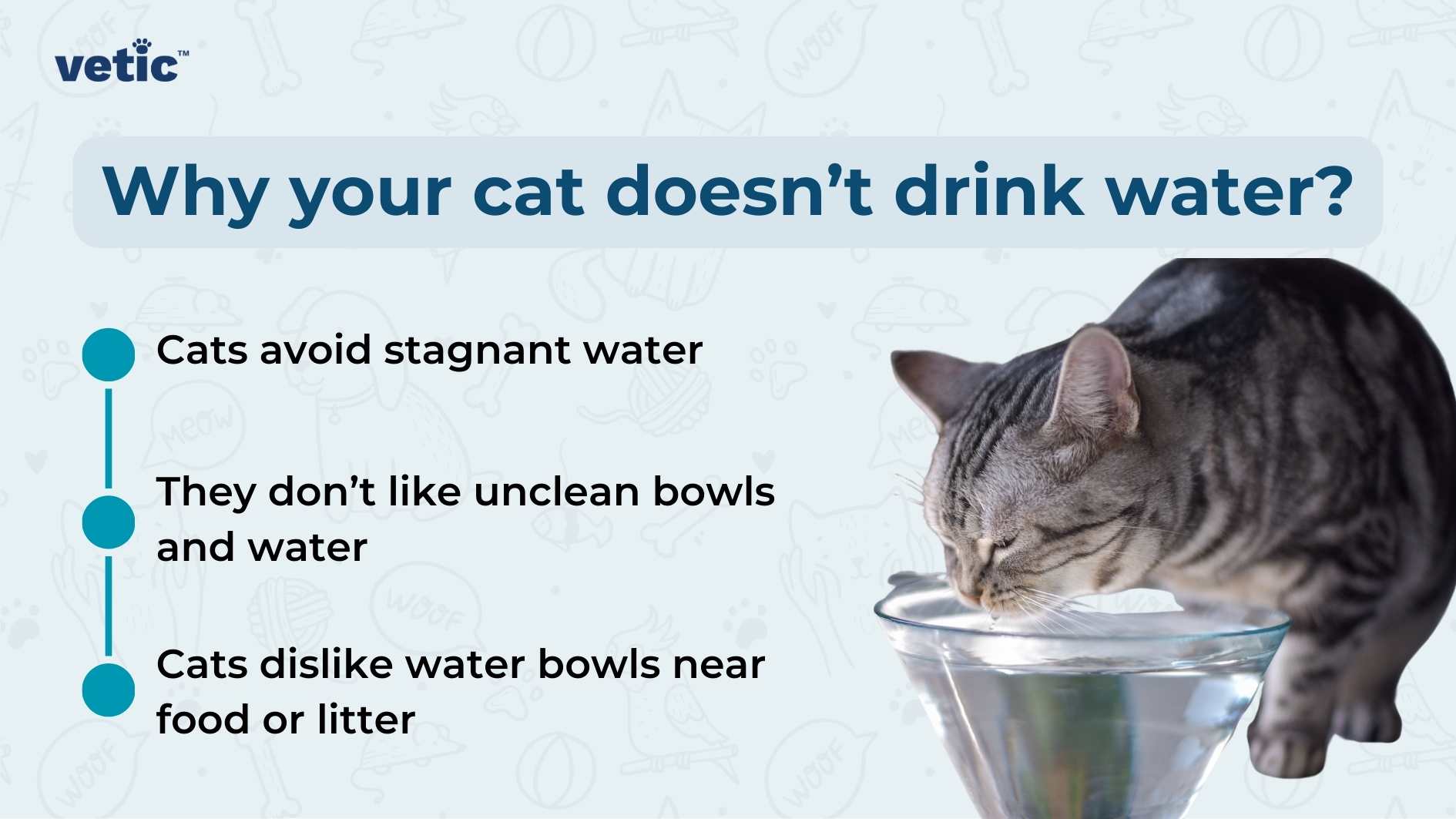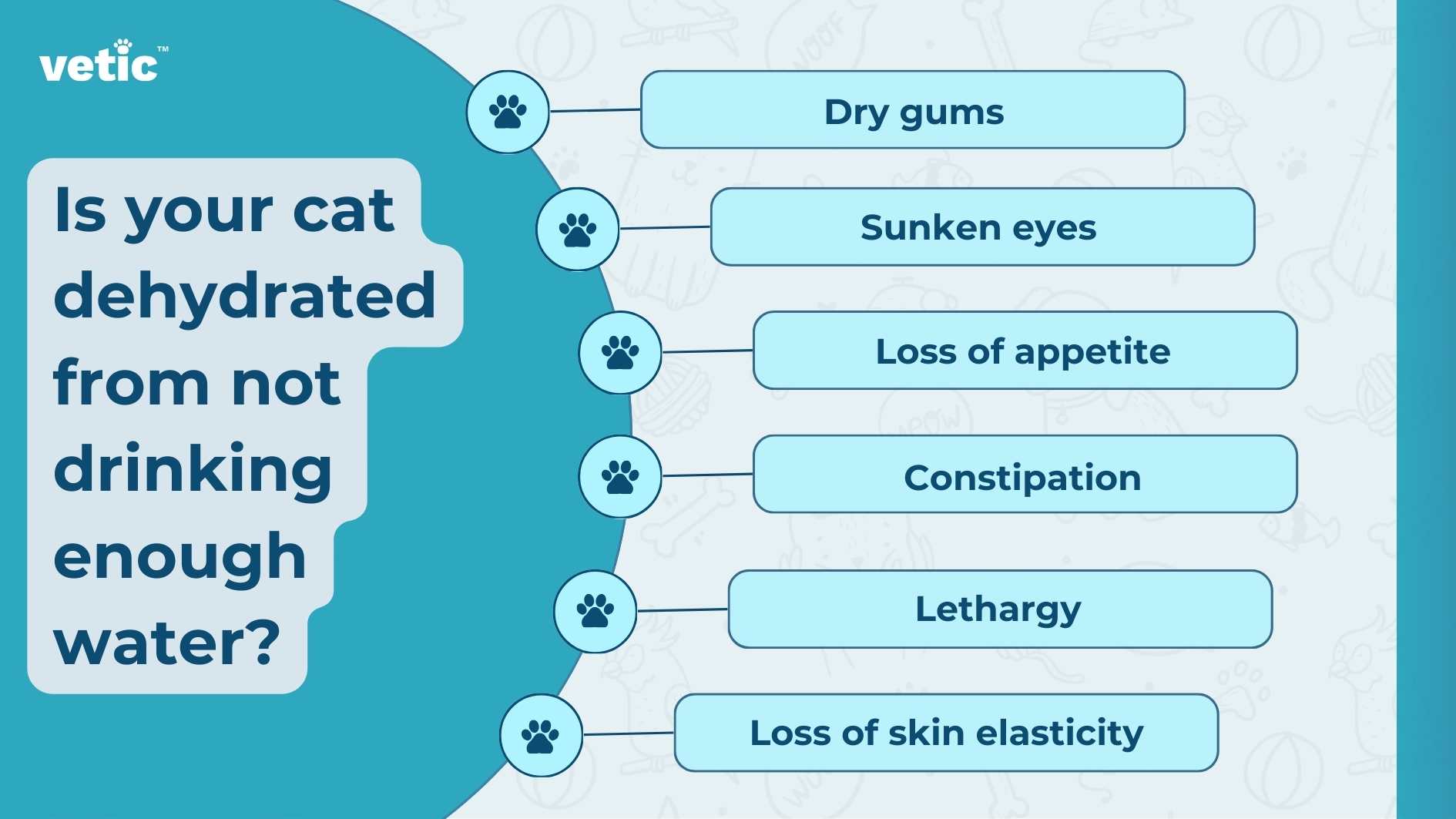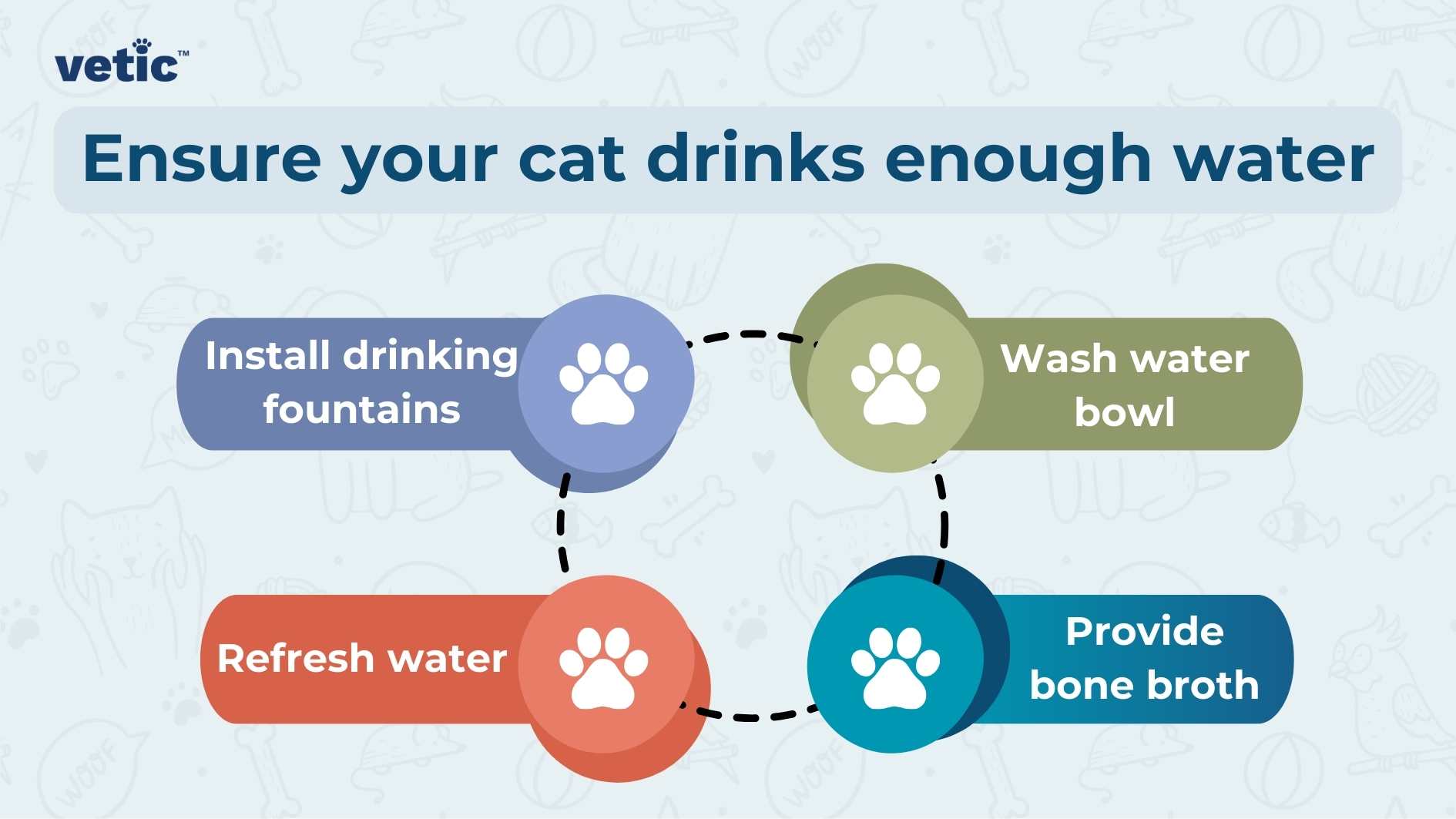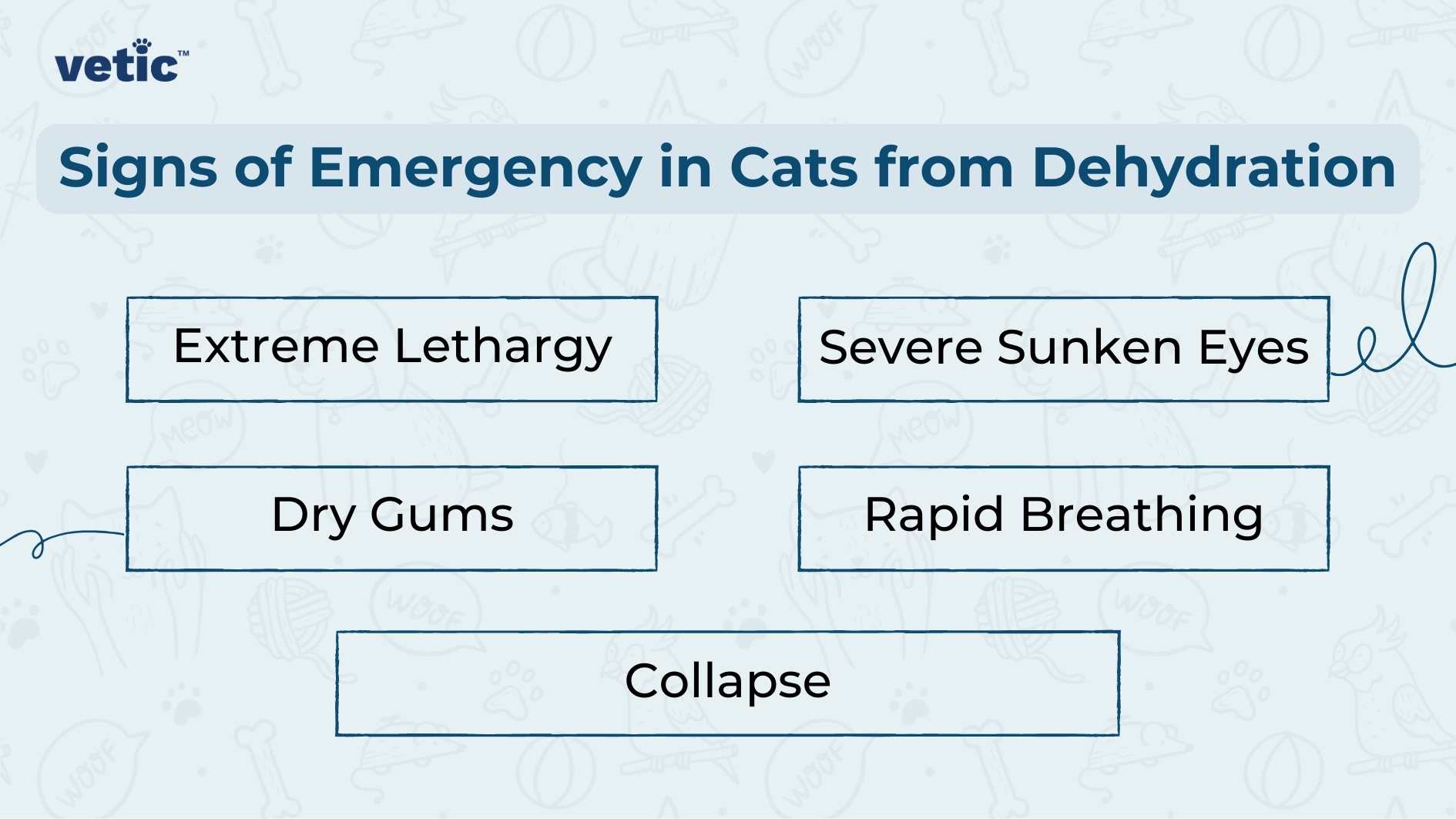Cats are fascinating creatures with unique habits. One common concern among cat parents is their cat’s water intake. You might notice your cat doesn’t drink water from their bowl and wonder if they are getting enough water.
Unlike dogs or humans, cats don’t gulp down water frequently. Their behaviour can be puzzling and worrying. However, understanding their drinking habits and the reasons behind them can help you ensure your feline friend stays hydrated and healthy.
Let’s dive into the common reasons and solutions for why your cat doesn’t drink water.
Why You Think Your Cat Doesn’t Drink Water
Cats tend to sip small amounts of water rather than drinking large quantities at once. This behaviour stems from their desert-dwelling ancestors who got most of their hydration from their prey.
Your cat might be getting enough moisture from wet food or small, frequent drinks. Observing their behaviour can give you insights into their hydration habits and help you adjust their diet if necessary.
Cats Do Drink Water: They are Just Picky!

Evolutionary Reasons Cats Avoid Stagnant Water
In the wild, stagnant water can harbour bacteria and parasites. Evolution has taught cats to be cautious about drinking from still water sources. They often prefer running water, like a dripping faucet or a pet water fountain. This instinctive behaviour ensures they avoid potential contaminants that could make them sick.
Placement of the Water Bowl
Cats can be particular about where their water bowl is placed. If it’s too close to their food or litter box, they might avoid it. Place their water bowl in a quiet, clean area to encourage drinking. Experimenting with different locations can help you find the most appealing spot for your cat’s water bowl.
Cleanliness of Your Cat’s Water Bowl
Cats are very sensitive to the cleanliness of their water. A dirty bowl can discourage them from drinking. Make sure to wash their water bowl daily and refill it with fresh water. If your cat doesn’t drink water, try using stainless steel or ceramic bowls. These are easier to clean and can also help maintain a hygienic environment.
However, if your cat doesn’t drink water at all, you may need to consider a physiological rather than a behavioural reason.
Probable Health Reasons Your Cat Doesn’t Drink Water
Dental Disease
Dental problems can make drinking water painful for cats. Issues like tooth decay, gum disease, or oral infections might cause them to avoid drinking. Regular dental check-ups and cleanings can help prevent these issues and ensure your cat remains comfortable while drinking.
Stomach Problems
Gastrointestinal issues can also lead to reduced water intake. If your cat has nausea or an upset stomach, they might avoid drinking water. Monitoring your cat for other symptoms and consulting a vet can help address these underlying health problems.
Chronic Diseases
Chronic illnesses, such as kidney disease or diabetes, can affect a cat’s water intake. These conditions might make your cat feel unwell, leading to decreased water consumption. Managing chronic diseases with the help of your vet can improve your cat’s overall health and encourage better hydration habits.
How to Understand if Your Cat is Dehydrated

Dehydration in cats can be serious. Here are some signs to look out for:
Dry Gums: Gently lift your cat’s lip and touch their gums. If they are dry or tacky, your cat might be dehydrated. This can be a clear indication that your cat needs more fluids.
Sunken Eyes: Dehydration can cause a cat’s eyes to appear sunken. If your cat’s eyes seem less bright or look sunken into their head, this could be a sign. Comparing current photos with older ones can help you notice these changes.
Lethargy: A dehydrated cat may become unusually tired or inactive. If your cat is less playful or sleeps more than usual, dehydration might be the cause. Keeping track of their energy levels can help you spot any significant changes.
Loss of Skin Elasticity: Gently pinch the skin on the back of your cat’s neck. If it doesn’t spring back quickly, your cat might be dehydrated. This simple test can give you a quick insight into their hydration status.
Decreased Appetite: Dehydration can lead to a reduced appetite. If your cat is eating less than usual, it might be due to a lack of water. Noticing changes in their eating habits can help you catch dehydration early.
How Much Water Should Your Cat Drink
A general rule is that cats should drink about 40 to 60 millilitres of water per kilogram of body weight daily. If your cat weighs 5 kilograms, they should drink 200 to 300 millilitres of water each day.
Keep in mind that cats eating wet food will need less water as wet food contains significant moisture. Ensuring your cat drinks enough water can help maintain their overall health and prevent potential issues.
How to Ensure Your Cat Drinks Enough Water

To encourage your cat to drink more, try these tips:
- Use a pet water fountain to provide fresh, running water. Cats often find moving water more appealing, which can increase their water intake.
- If you are frugal like I am, keep a faucet dripping when you leave home so your cat can have some at their will.
- Place multiple clean water bowls around your home. Having various accessible spots can encourage more frequent drinking.
- Add a bit of flavour to the water, like tuna juice or low-sodium chicken broth. This can make the water more enticing for your cat.
Ensure the water bowl is clean and in a quiet location. Reducing stress and maintaining hygiene can significantly improve their drinking habits.
Signs of Emergency from Dehydration and What You Should Do

Severe dehydration can be life-threatening. Here are signs of emergency dehydration:
Extreme Lethargy
If your cat is extremely tired and doesn’t respond to stimuli, this is a serious sign. Immediate action is needed to prevent further complications.
Rapid Breathing
Fast or laboured breathing can indicate severe dehydration. This requires prompt veterinary attention to stabilise your cat.
Collapse
If your cat collapses or is unable to stand, this is an emergency. Immediate veterinary care is crucial in this situation.
Severe Sunken Eyes and Dry Gums
If your cat’s eyes are very sunken and their gums are extremely dry, seek help immediately. These are clear indicators of advanced dehydration.
What You Should Do if Your Cat is Dehydrated from Not Drinking Water
Seek Veterinary Care
If you notice any of these signs, take your cat to the vet immediately. Severe dehydration requires professional treatment to ensure recovery.
Use Vet-Approved Oral Rehydration Solutions (ORS)
While waiting to see the vet, you can offer a vet-approved ORS to help rehydrate your cat. These solutions are specifically designed to help pets recover from dehydration.
Provide Fresh Bone Broth
Ensure your cat drinks enough water with nutrients by providing them with bone broth, assuming they do not have any dietary restrictions. At the same time, keep their water bowl filled to help prevent dehydration.
The Takeaway
Cats have unique drinking habits that stem from their evolutionary history. Understanding why your cat might not drink water can help you make changes to ensure they stay hydrated.
Keep an eye out for signs of dehydration and know when to seek emergency care. By providing fresh, clean water and encouraging regular intake, you can help maintain your cat’s health and well-being. Taking these steps will ensure your feline friend stays happy, healthy, and well-hydrated.

